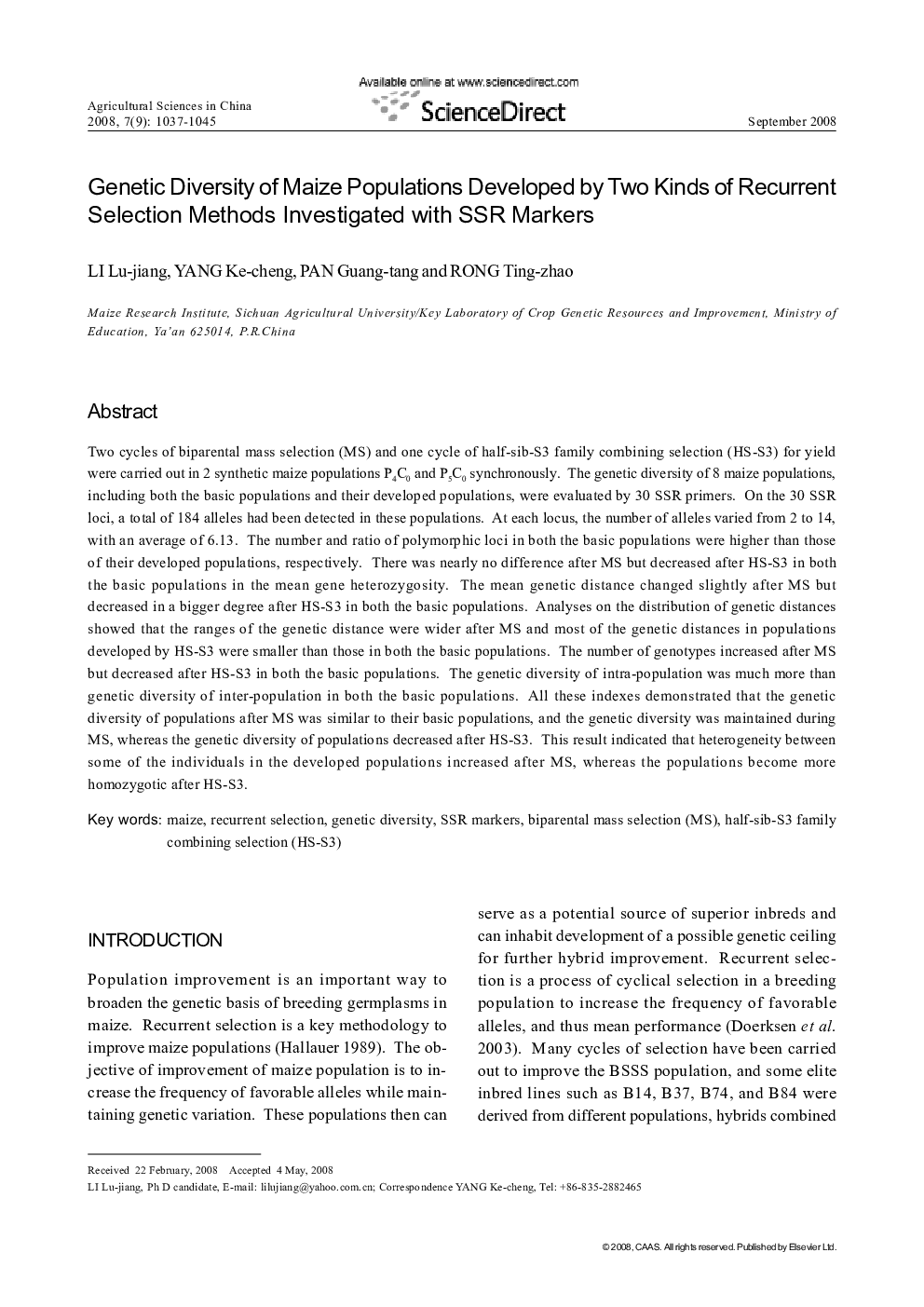| Article ID | Journal | Published Year | Pages | File Type |
|---|---|---|---|---|
| 4490559 | Agricultural Sciences in China | 2008 | 9 Pages |
Two cycles of biparental mass selection (MS) and one cycle of half-sib-S3 family combining selection (HS-S3) for yield were carried out in 2 synthetic maize populations P4C0 and P5C0 synchronously. The genetic diversity of 8 maize populations, including both the basic populations and their developed populations, were evaluated by 30 SSR primers. On the 30 SSR loci, a total of 184 alleles had been detected in these populations. At each locus, the number of alleles varied from 2 to 14, with an average of 6.13. The number and ratio of polymorphic loci in both the basic populations were higher than those of their developed populations, respectively. There was nearly no difference after MS but decreased after HS-S3 in both the basic populations in the mean gene heterozygosity. The mean genetic distance changed slightly after MS but decreased in a bigger degree after HS-S3 in both the basic populations. Analyses on the distribution of genetic distances showed that the ranges of the genetic distance were wider after MS and most of the genetic distances in populations developed by HS-S3 were smaller than those in both the basic populations. The number of genotypes increased after MS but decreased after HS-S3 in both the basic populations. The genetic diversity of intra-population was much more than genetic diversity of inter-population in both the basic populations. All these indexes demonstrated that the genetic diversity of populations after MS was similar to their basic populations, and the genetic diversity was maintained during MS, whereas the genetic diversity of populations decreased after HS-S3. This result indicated that heterogeneity between some of the individuals in the developed populations increased after MS, whereas the populations become more homozygotic after HS-S3.
